Depending on who you ask, dry pipe sprinkler systems account for between 15-20% of the total number of installed fire sprinkler systems throughout the United States. Although they are less common when compared to a wet pipe sprinkler system, there are some cases when a dry pipe fire suppression system is more fitting. Find out what makes a dry pipe sprinkler system desirable and undesirable when taking into account certain considerations.
When to Use a Dry Pipe Fire Suppression System
Dry pipe fire suppression systems are primarily used for two different scenarios: freeze risk and accidental water discharge. Dry pipe sprinkler systems are installed in areas subject to freezing temperatures when there is a risk of water freezing inside a sprinkler pipe and causing it to burst. Common examples would be attic spaces, loading docks, parking structures, and cold storage applications.
The other instance to install a dry pipe fire suppression system is to protect a critical or sensitive area where accidental water discharge would create substantial damage or downtime. These types of applications typically utilize a special type of dry pipe system known as a pre-action system. A pre-action sprinkler system usually requires a two-step activation process that includes a fire sprinkler activation plus another detection or initiating device to release water into the sprinkler system. These are used in electrical rooms, data centers/server halls, telecommunications, mission critical manufacturing, and cultural resource applications.
Disadvantages of a Dry Pipe Fire Suppression System
There are several disadvantages to using dry pipe sprinkler systems. Due to their added complexity and more stringent installation requirements, they are more expensive and time-consuming to install when compared to a wet pipe sprinkler system. Dry pipe fire suppression systems also require more testing and maintenance than a traditional wet pipe system. Dry systems require auxiliary drains and drum drips to be exercised regularly and full or partial trip testing of the dry pipe valve every 1-3 years.
System reliability and longevity should also be considered when comparing dry pipe systems with wet pipe systems. As you will find referenced throughout the ECS website, oxygen is the primary cause of corrosion and leaks in fire sprinkler systems. When maintained with supervisory compressed air, dry pipe systems have an essentially unlimited supply of oxygen whereas wet pipe systems have a finite supply of oxygen that is fully consumed within 3-4 months after the most recent drain and refill event.
Because of the excess available oxygen, dry pipe sprinkler systems corrode substantially faster than wet pipe systems unless a nitrogen-based corrosion control system is implemented. Internal corrosion debris can cause obstructions and restrict pipe diameters that result in diminished system performance and extended water delivery times during a fire event. The corrosion process also produces wall thinning and pin hole leaks that result in expensive system repairs and ultimately premature system replacement.
Advantages of a Dry Pipe Fire Suppression System
Although dry pipe fire sprinkler systems are more expensive to install, they can significantly reduce overall project costs in some applications. Using an attic space as an example, the installation of a dry pipe fire suppression system eliminates the need to insulate and heat the protected area. In many commercial buildings, unoccupied spaces require sprinkler protection where combustible construction materials are used. The cost difference between using non-combustible materials and installing a dry pipe fire suppression system can be significant.
In other instances, a dry pipe fire suppression system can be a comparatively inexpensive option when the alternative requires significant architectural or construction changes, such as a parking structure attached to an occupied building.
Conclusion
When comparing wet pipe systems with dry pipe systems, it is apparent that wet pipe systems are the preferred system type for building owners and operators. Wet pipe systems are less expensive to install and maintain and are more likely to perform reliably for a longer period of time.
There are some applications, however, where a dry pipe sprinkler system is appropriate – either it is protecting a space that cannot reasonably be heated and insulated, or it is protecting a space where the cost and risk associated with water damage far outweighs the disadvantages associated with a dry pipe fire suppression system. When dry pipe sprinkler systems must be used, ECS offers dry pipe corrosion control solutions that eliminate reliability and longevity disadvantages.


